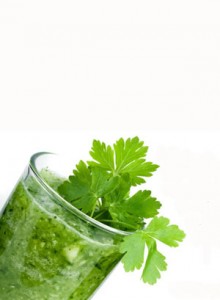
More evidence that low-calorie sweeteners are bad for your health
Studies show that artificial sweeteners can raise the risk of hypertension, metabolic syndrome, type 2 diabetes and heart disease, including stroke.

You may have heard a lot about the benefits of getting more green plants into your diet.
But just what is it about the green stuff that is so good?
Plants are abundant in living chlorophyll, it makes plants green, its often called the ‘blood’ of the plant world. In colour therapy green is called ‘the master colour’ benefiting all conditions and correcting imbalances.
The colour green, of course, is associated with spring, a time of growth and renewal – think of how you feel when walking in green spaces, it brings peacefulness.
Green foods balance the pH of the body and help detoxification, they have long been used to fight inflammation, restore our vitality and build the blood.
They are also rich in essential minerals.
Minerals occur naturally through time as rocks erode into dust and form soil. These are then used as mineral salts by microbes in the soil, which work in harmony providing nutrients for the plants health.
Minerals are like electrical conductors for our nerve cells. They also help alkalise the body. Every living cell needs minerals for life Using minerals from plants is the most balanced way for us to absorb them easily.
A few of the best
So what are the best greens to go for? We’ve picked a few of our favourites. Some are great just eaten fresh or juiced as part of your daily diet. Others are mostly taken as supplements. A good quality green food powder with these plant powerhouses can be a great ingredient to use in your healthy cooking; use it in smoothies, salad dressings, soups, risottos and more.
Spinach
This dark leafy green is a great source of minerals, especially calcium, magnesium, phosphorus, iron, zinc, potassium as well as vitamins A, C, E and folic acid. It is traditionally used after winter to replace lost nutrients and is great for
Spirulina
One of the oldest life forms on earth (3.5 billion years), spirulina is a single celled micro algae
found in fresh and saltwater. It’s also a nutrient powerhouse containing up to 71% pure protein, 18 amino acids and a full spectrum of nutrients. It’s great for:
Parsley
Native to the Mediterranean, used medicinally for 2,000 years. More vitamin C than citrus, rich in vitamin A, folate, calcium, iron and antioxidants. Include more of it in your diet to help:
Chlorella
A single celled, fresh water micro algae, consumed by 7 million people in Japan daily. chlorella is milled to break down it tough cellulose wall, and make it more digestible. Studies show it has more chlorophyll than any other plant (3-5%). It contains 60% protein as well as something called “chlorella growth factor” (CGF) which is rich in amino acids, peptides, proteins, vitamins, sugars, and nucleic acids. Use it for:
Wild Wrack
Seaweeds such as Ascophyllum, Pelvetia and Fucus have been harvested for food, fertiliser and medicine for thousands of years. Gram for gram seaweeds are higher in minerals and vitamins than land vegetables and are useful for:
Barley grass and wheat grass
These two grasses are nutritionally identical, though barley grass is easier to digest. These grasses are harvested by hand at the jointing stage when they are at their nutritional peak. Amazingly 1oz of wheat grass is the nutritional equivalent of 1k green vegetables! Barley grass has 11x more calcium than milk, 5x more iron than spinach, 7x more vitamin C than oranges. Great for:
Oat grass
A good source of many essential nutrients: Vitamins A, C, E and K, pantothenic acid, chlorophyll, lecithin, calcium, magnesium, potassium, iron and phosphorus. Made by juicing the grass, dehydrated then milled to a powder, it is used for:
Green tea
Yes tea is a green plant food too! After water tea is the second most consumed product in the world. All tea comes from the same plant, but green tea is unfermented leaving it high in healthy antioxidants. Studies show it has benefits for:

Please subscribe me to your newsletter mailing list. I have read the
privacy statement